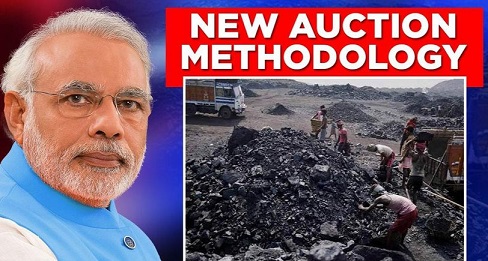By Our Correspondent
NEW DELHI/BHUBANESWAR/ANGUL: With the 9 mines blocks including Chendipada I, Chendipada II, Machhakata, Mahanadi, Radhikapur (East), Radhikapur (West), Brahmanbil & Kardabahal, Kuraloi (A) North, and Phuljhari (East & West) were put for auction in Odisha. Most of these Blocks belongs Angul-Talcher coal Belt, close to Satkosia and Similipal Tiger Reserves.
Additionally, state governments will probably generate more than Rs 20,000 crore per year in royalties from these mines: Odisha (9 mines) – Rs 10,648 crore; Chhattisgarh (9 mines) – Rs. 4,399 crore; Jharkhand (9 mines) – Rs 3,242 crore; Madhya Pradesh (11 mines) – Rs 1,897 crore; and Maharashtra (3 mines) – Rs 432 crore. Jharkhand’s mining royalties have ranged from Rs 4,000 crore to Rs 5,000 crore per year, so these mines are likely to increase royalties by 60-75 per cent for my state.
Lokashakti Abhiyan president Prafulla Samantara has urged Chief Minister Naveen Patnaik to oppose the Union Government’s “unilateral” and “undemocratic” decision to hand over 41 coal blocks to private corporate, including foreign investors.
Samantara alleged that the decision to have auction for private companies would take the power of the States. Meanwhile, out of five coal bearing States, three Jharkhand, Chhattisgarh and Maharashtra have protested and wrote letters of objections to the Union Minister of Forests, Environment and Climate change. The Jharkhand Government, taking one step forward, has approached the Supreme Court for cancellation of the decision.
In Odisha, more than 10,000 hectares of forest and agricultural land for nine coal blocks in Anugul and Jharsuguda districts would be destroyed and more than 10,000 families displaced. Besides, there would be intensive pollution in Talcher- Angul area, which has been declared the most pollutant region for the three decades. The Brahmani river would be more polluted and dried.
As per the Paris Agreement on climate change in 2015, the decision of allowing more coal mining for new thermal power plants is a violation of agreement. The Central and the State Governments have to strive for green energy with investments in solar and wind projects, he suggested.
If the State Government fails to oppose the Central decision, the people’s resistance is inevitable, said Samantara. He said the decision violates the Forest Rights Act 2006, PESA 1996and the Land Acquisition Act 2013. In the listed 41 local coal block areas, there are scheduled areas where tribal communities have right to decide mining in their area through Gram Shabhas as per the direction of the Supreme Court in NiyamGiri case in 2013, he reminded.
“Therefore I urge the Central Government to withdraw such unlawful decision. I also urge all political parties, including the BJD and the BJP, to oppose privatisation of coal blocks for corporates at the cost of the State’s natural capital,” said Samantara.
Top five states with highest coal reserves include my home state Jharkhand (26 per cent), Odisha (24 per cent), Chhattisgarh (17 per cent), West Bengal (11 per cent), and Madhya Pradesh (8 per cent). Currently, India produces about 729 million tonnes of coal per year with the bulk of the production (602 million tonnes or 83 per cent) coming from Coal India Ltd. In the next few years, the Coal Ministry has indicated that Coal India Ltd should produce 1,000 million tonnes per year. However, to meet its growth requirements and become self-sufficient, India should expand its production to 1,500 million tonnes per year.
As per Coal Ministry estimates, 41 coal mines are likely to produce about 225 million tonnes annually. It will require Rs 33,000 crore in capital expenditure to get these mines going and, at potential coal prices of Rs 1,500 to 2,000 per tonne, they are likely to generate about Rs 34,000 to Rs 45,000 crore in annual coal revenues.



























